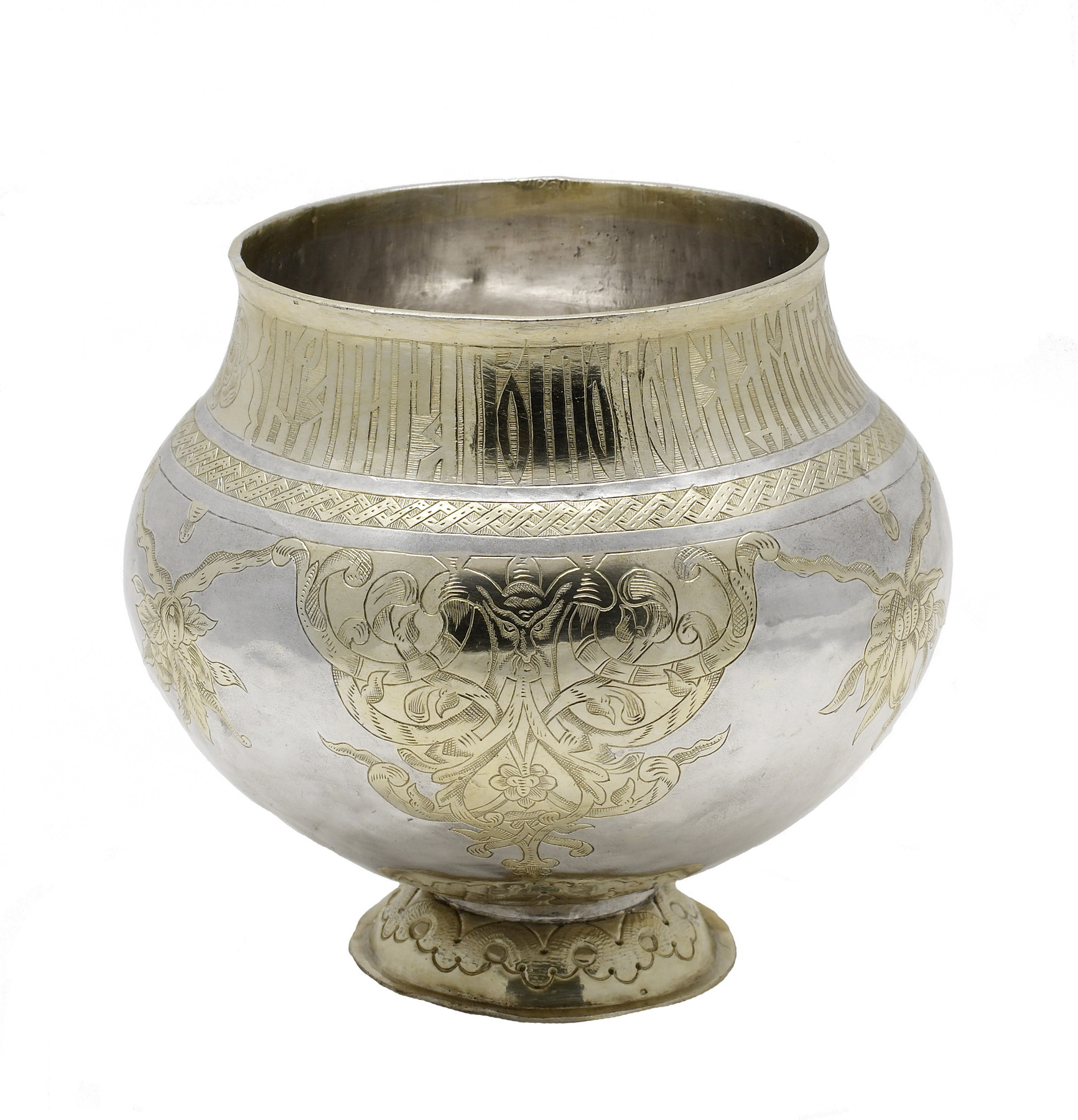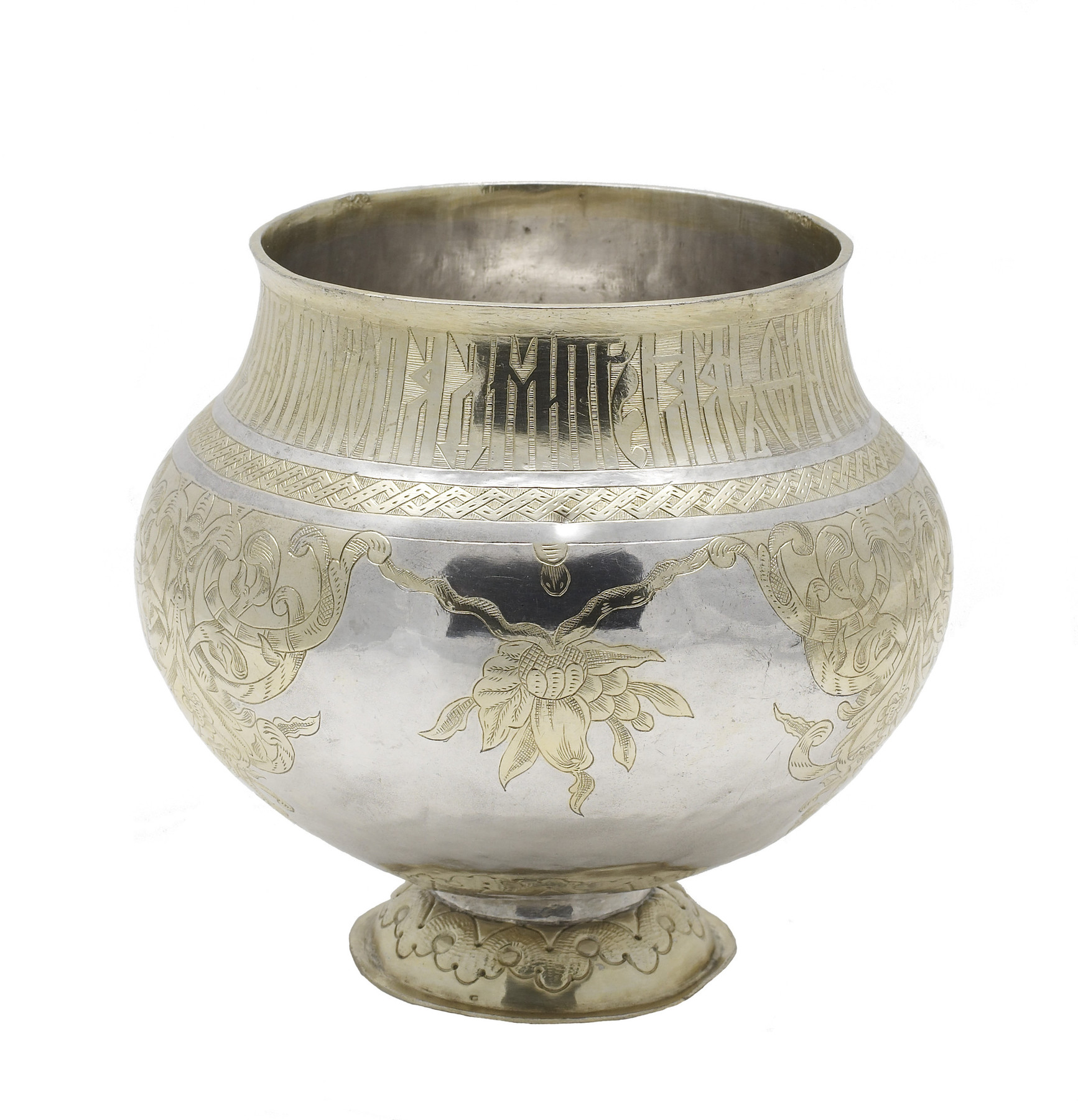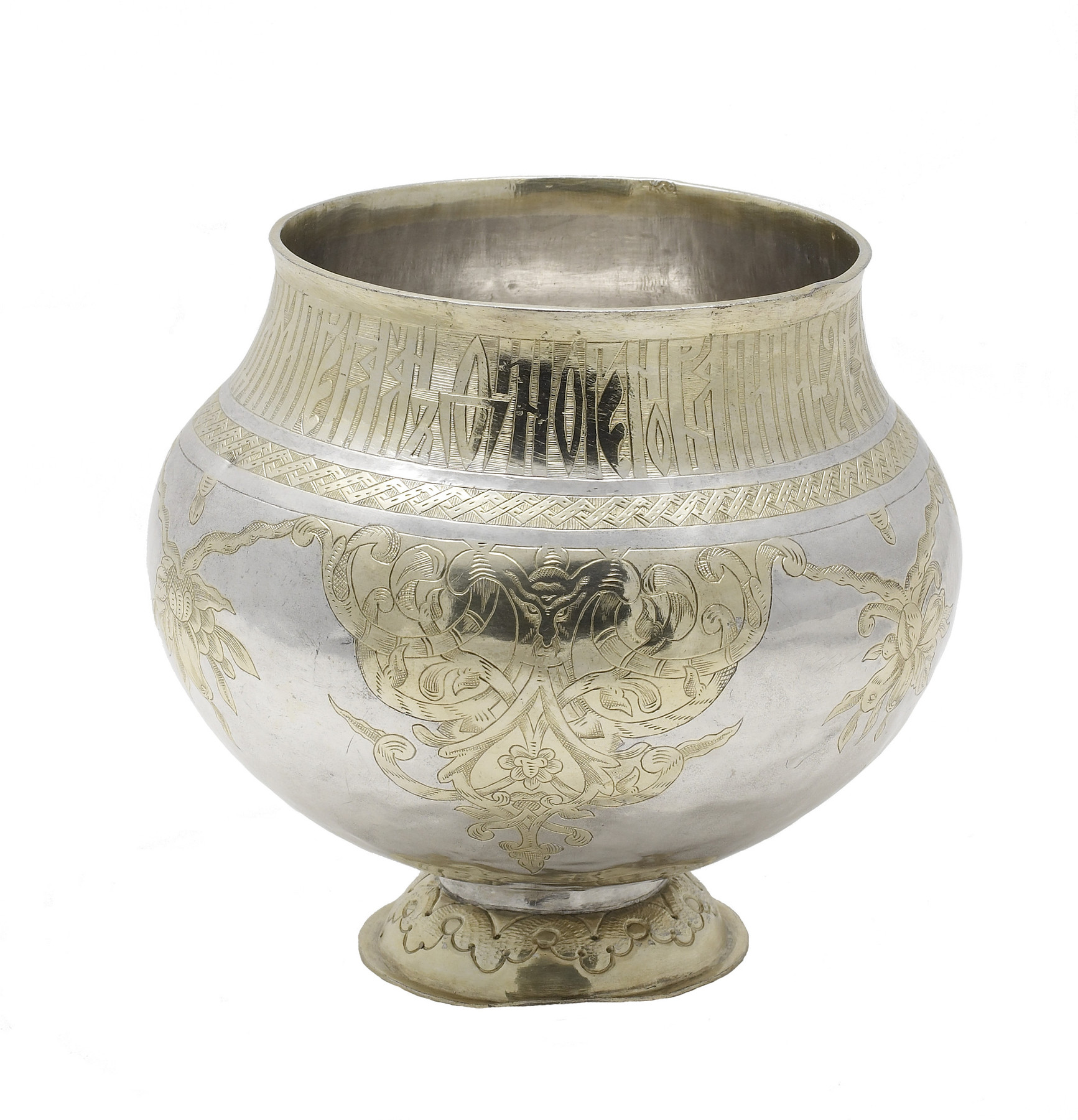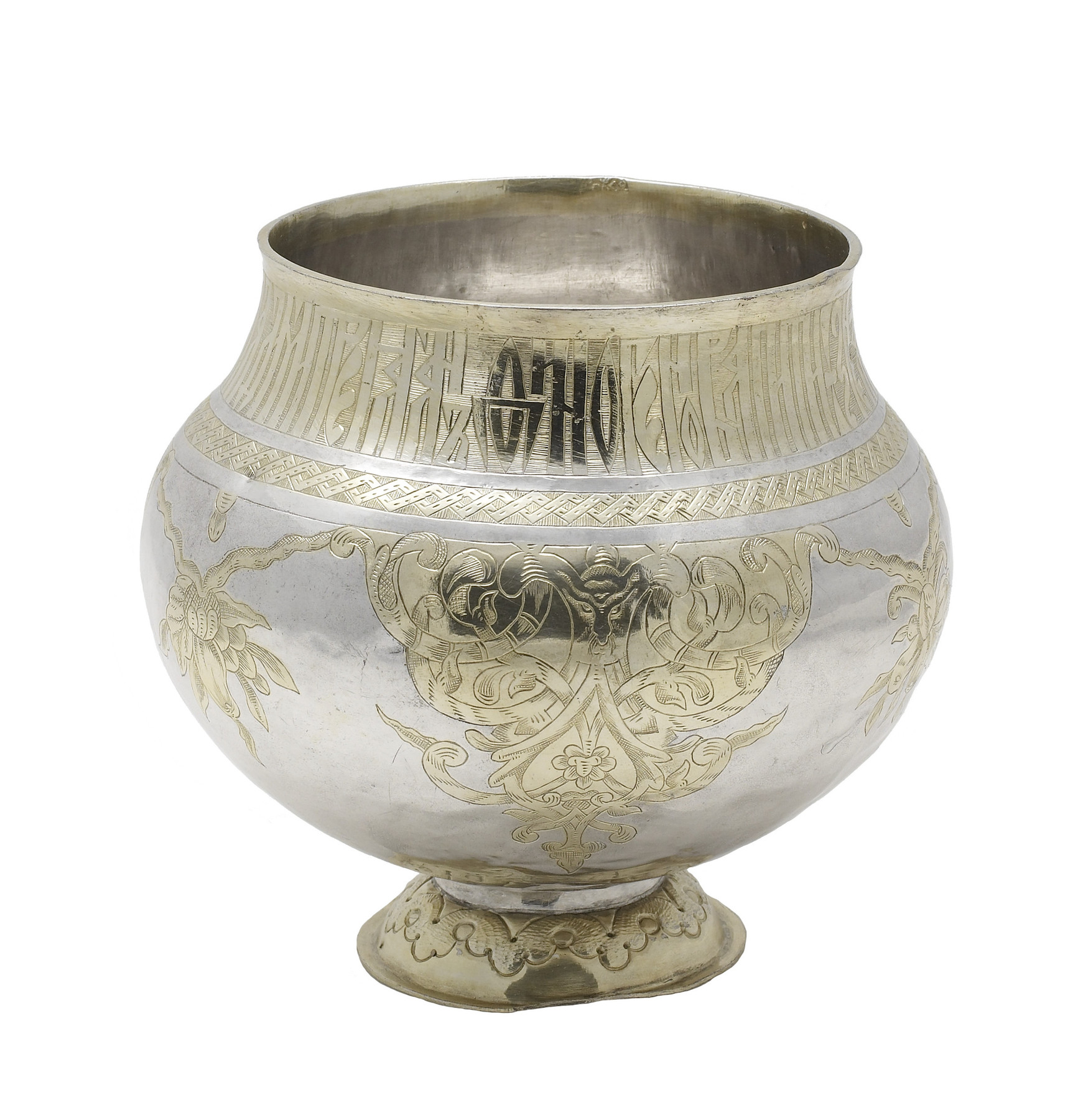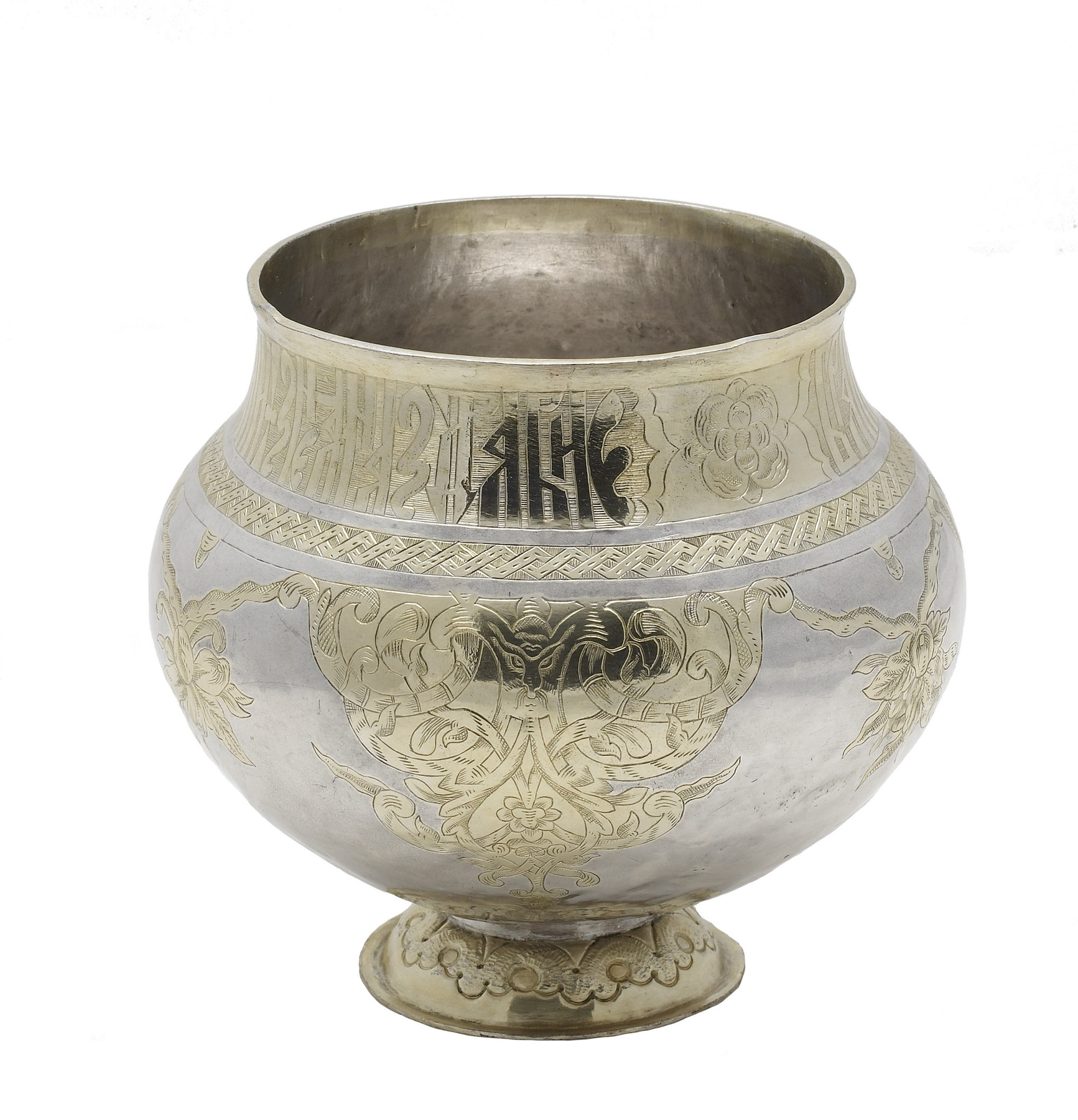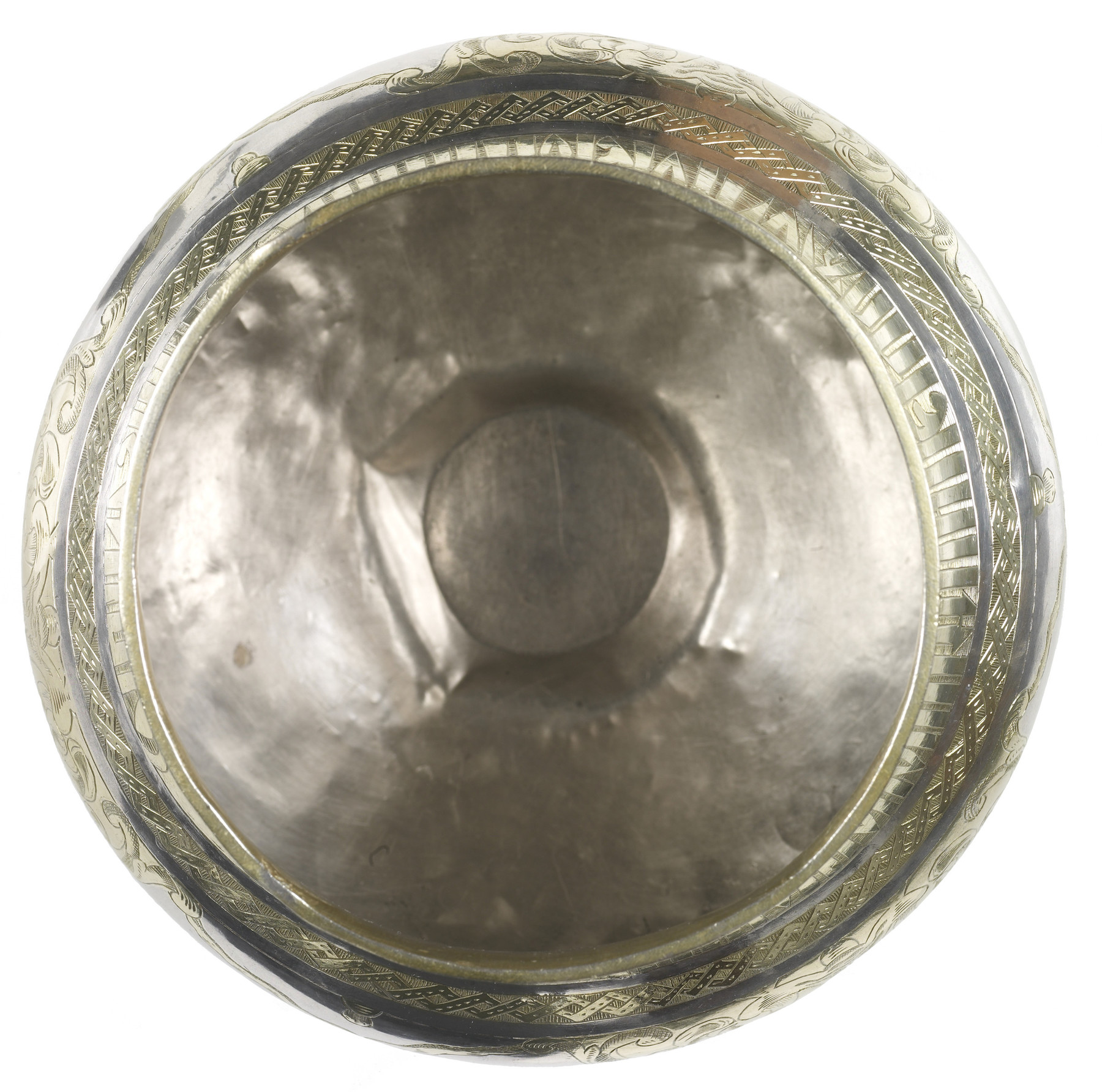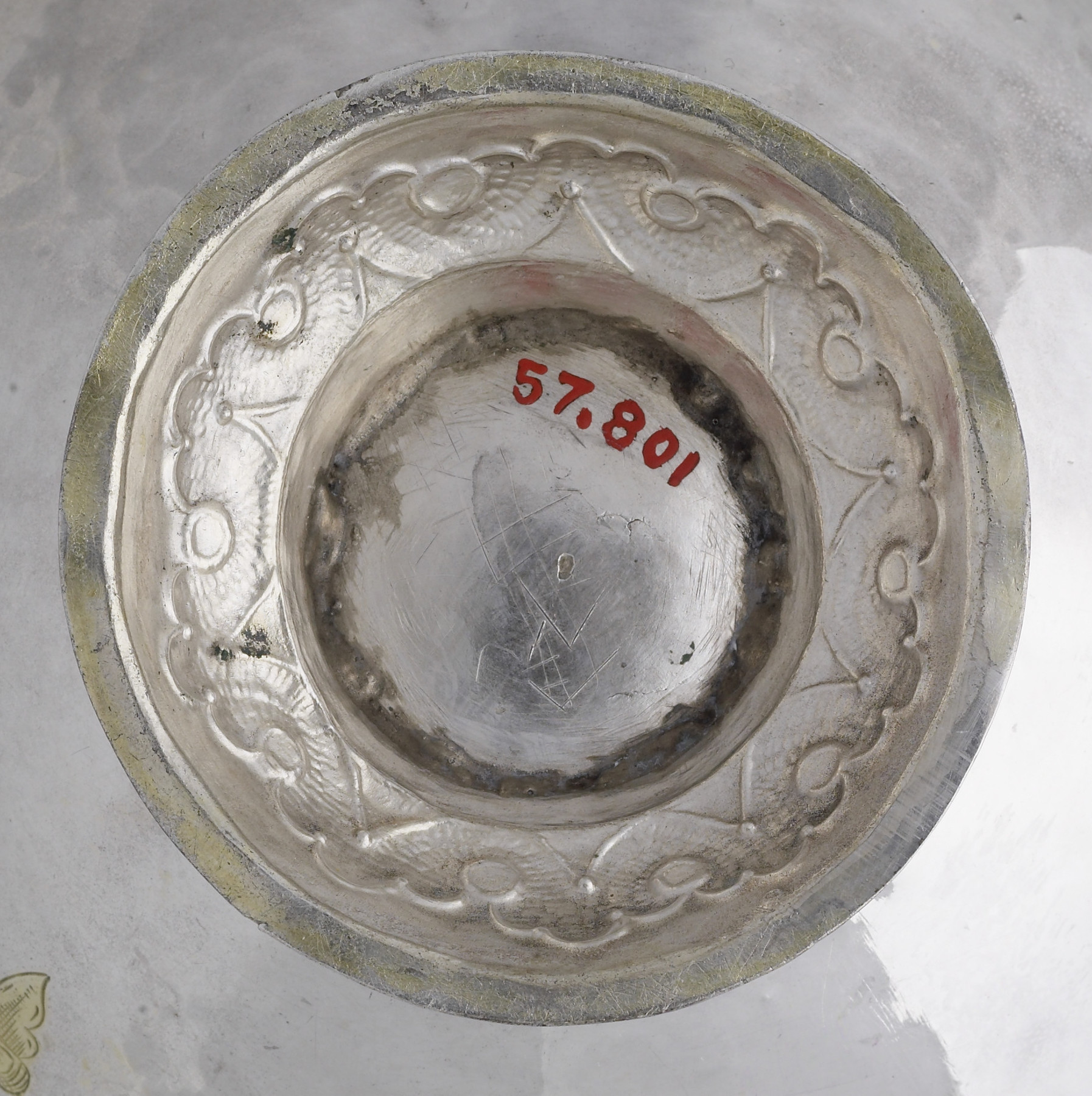Drinking Cup (Bratina)
(Baroque Europe )
The rounded body of this "bratina" or drinking cup is decorated with incised designs of interlaces, fantastic masks, and fruit, inspired by Dutch or Flemish prints. The cup's shape, with an inscription on a broad band at the rim in Russian celebrating drinking rituals, was a specialty of silversmiths associated with the Moscow court of the Tsar. While such cups were also made in Holland and Germany for the Russian market, there does not appear to be any evidence that that is this case here. Dutch and Flemish engravings intended as models for craftsmen were known to circulate in Russia. The inscription translates "Bratina of the Archpriest Demetrius Athinogenov. May one drink from it in good health."
Inscription
Provenance
Provenance (from the French provenir, 'to come from/forth') is the chronology of the ownership, custody, or location of a historical object. Learn more about provenance at the Walters.
Purchased by Count Aleksandr Alekseevich Musin-Pushkin, Saint Petersburg, before 1904; purchased by Alexandre Polovtsoff (Aleksandr Aleksandrovich Polovtsov), Paris; purchased by Henry Walters, Baltimore; by bequest to Walters Art Museum, 1931.
Exhibitions
| 1988-1989 | A Millennium of Christianity: Russian Art from The Walters Art Gallery. The Walters Art Gallery, Baltimore. |
| 1959-1960 | Russian Art: Icons and Decorative Arts from the Origin to the Twentieth Century. The Walters Art Gallery, Baltimore. |
Conservation
| Date | Description | Narrative |
|---|---|---|
| 9/14/2017 | Examination | Cleaned for exhibition. |
| 9/14/2017 | Examination | A mid-20th century coating failed. The old coating was removed. The bratina was lightly polished using precipitated chalk. A new coating of Agateen 27 Lacquer was applied using a brush. |
| 9/18/2017 | Treatment | Cleaned for exhibition |
| 9/18/2017 | Treatment | The bratina was coated with an acrylic resin in the 1950s or '60s that had failed. The silver was irregularly tarnished. The surface was cleaned using acetone to remove the old coating. Spots of tarnish were removed using precipitated chalk in distilled water. After cleaning and degreasing, the bratina was coated to slow future tarnishing. |
Geographies
Russia, Moscow
(Place of Origin)
Germany, Hamburg (Place of Origin)
Measurements
H: 5 1/16 in. (12.8 cm)
Credit Line
Acquired by Henry Walters
Location in Museum
Not on view
Accession Number
In libraries, galleries, museums, and archives, an accession number is a unique identifier assigned to each object in the collection.
In libraries, galleries, museums, and archives, an accession number is a unique identifier assigned to each object in the collection.
57.801

